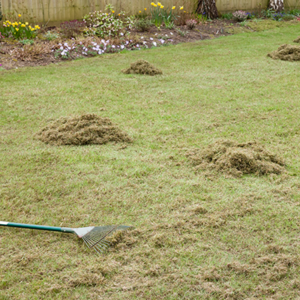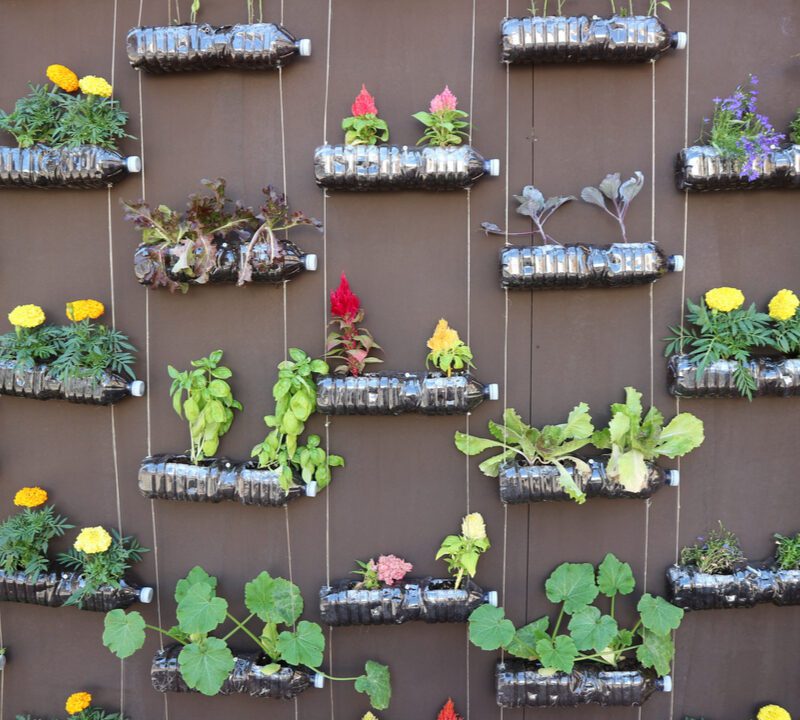- America's #1 lawn care company.
- 225-752-7252
Aeration vs Dethatching: How To Tell Which Is Right For Your Lawn

Best Shrubs To Grow In Louisiana
July 12, 2021
Which Type of Grass Should I Plant on My Lawn?
August 9, 2021From time to time, it’s important to have your lawn aerated or dethatched. These are two vital parts of a good lawn maintenance routine. While they perform similar functions and provide similar benefits, they do have some differences. Learn how to decide which is right for your lawn and recognize the signs that your lawn may require one of these services.
What Is Aeration
Lawn aeration uses a specialized tool, called an aerator, to punch thousands of tiny holes in the lawn. And they are really are tiny – you won’t even see them unless you look closely, so your lawn’s appearance will not be affected. The aerator then disperses these small plugs back onto the lawn so they can break down into mulch. By creating these holes, the compacted soil is broken up. Soil becomes compacted naturally over time, but it can happen more quickly if you have children or pets that play on the lawn or your lawn experience high foot traffic in general. When soil is compacted, it’s extremely hard for air, water, nutrients, and sunlight to penetrate the soil. Because compacted soil is so hard, it can also impact the root growth of your turfgrass.
Signs Your Lawn Needs Aeration
- The grass feels hard like concrete when walking over it
- Water pools after rainfall
- Water runs off the grass, rather than absorbing into it
- The appearance of thin, bare, or uneven patches
- Lawn looks discolored
- You can’t dig into the soil with garden tools
Benefits of Lawn Aeration
- Decreases soil compaction
- Improves grass health
- Lets nutrients penetrate deeper into the root zone
- Reduces water runoff or standing water
- Reduces thatch accumulation
- Lets grassroots develop properly for a stronger turf
- Thickens thin or bare patches
What Is Dethatching
Like soil compaction, thatch is a natural build-up of organic matter. And how you use your lawn will determine the rate at which it accumulates. Thatch is the layer of this dead organic material on your lawn. Usually, it comprises things like dead leaves, flower petals, or, most often, grass clippings. This organic debris creates a semi-solid mat-like layer called thatch. Some thatch is okay and is even beneficial. It can help starve weeds of sunlight by keeping them smothered. However, too much thatch will tip the scale in the other direction and start to smother the grass. Like compacted soil, too much thatch can prevent air, water, sunlight, and nutrients from reaching the roots of your grass. When we dethatch, we use special rakes to comb out the thatch layer.
Signs Your Lawn Needs To Be Dethatched
The signs that your lawn needs dethatching are similar to those of core aeration.
- A straw-like substance covers the grass
- Water pools after rainfall
- Water runs off the grass, rather than absorbing into it
- The appearance of thin, bare, or uneven patches
- Lawn looks discolored
Benefits of Lawn Dethatching
There are many benefits to having TruGreen Midsouth dethatch your lawn. They include:
- Nutrients, water, air, and sunlight can reach your grass again
- The overall health of the soil improves
- The quality of the soil improves
- The grass is less prone to discoloration, wilting, and die-off
- Water can seep into the soil again
- Reduced standing water
Solve The Standing Water Problem
Soil compaction and excess thatch can both create problems with drainage in your lawn. If you go too long without aeration or dethatching treatment, this standing water can cause more problems than a disappointing and worn-out lawn. Standing water is the perfect place for mosquitoes to breed. Female mosquitoes need to lay their eggs in water that won’t be disturbed, and puddles in a lawn are the perfect place. Likewise, there are many lawn diseases like molds and mildews that need moist environments to thrive. By delaying aeration or dethatching treatment, you’re giving it to them on a silver platter.
Trust The Dethatching And Lawn Aeration Service At TruGreen Midsouth
Whether your lawn is in dire need of aeration or a good application of a dethatching rake, you can rest assured the team at TruGreen Midsouth will get the job done right. Our core aeration and dethatching service removes debris and loosens the soil so your turfgrass can get air, water, sunlight, and nutrients once more. Either one can be a great compliment to your regular lawn care service package. If you’d like to learn more about these vital services or schedule an appointment, you can leave us a message online or call our local offices:
For tree and lawn care service in Mississippi, call our Tupelo office at 662-330-1330, or check our Mississippi branch Facebook page.
For tree and lawn care service in Louisiana, call our Baton Rouge office at 225-465-0665, or browse our Louisiana branch Facebook page.
Don’t forget to check our blog page for twice-monthly articles on all things yard care-related!




